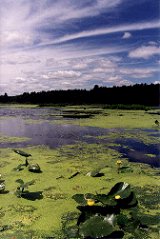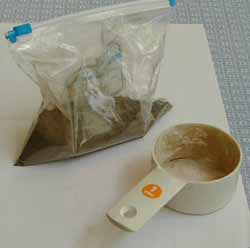Organization for the Assabet River
Damonmill Square
Concord, MA 01742
Tel: 978-369-3956
Email: oar@assabetriver.org
|
'Green' lawn care
|
||
| |
||
|
Thoughtful lawn care and fertilizer use is important to restoring and protecting our waterways.
The problem The same nutrients - phosphorus (P) and nitrogen
(N) - that fertilize our lawns, also "fertilize" our river, lakes,
ponds and streams.
How lawns can contribute to the nutrient problem Lawns are aesthetically pleasing and provide enjoyable places to play and relax. But they can also export significant loads of phosphorus and nitrogen to the Assabet River, local streams, lakes and ponds. How? During a storm, rain water (aka "storm water") transports phosphorus and nitrogen attached to fine soil particles, or dissolved in the rain water, from your yard to nearby waterways. Nitrate, a form of nitrogen that does not bind to soil particles, can also leach down into groundwater, particularly in sandy soils, and eventually enter streams and wetlands. In dry weather, wind can also carry nutrient-laden particles and organic matter from your yard to nearby waterways. Sources of phosphorus and nitrogen on the lawn
Rain and wind also transport phosphorus and nitrogen to waterways from undeveloped and uncultivated lands. Most of these nutrients enter rivers and streams attached to soil particles or contained in organic material such as dead leaves. It is a natural process. However, when people apply excess fertilizer, apply quick-release (water soluble) fertilizer, or apply fertilizer at the wrong time, rain and wind can deliver large, unnatural quantities of phosphorus and nitrogen to waterways, causing significant pollution problems. To reduce the quantity of phosphorus and nitrogen exported from your lawn, test the soil to find out what nutrients it needs to grow grass, apply only the type and quantity of fertilizer indicated by the soil test, and keep both fertilizers and water on your lawn.
Continue to ... Managing Your Lawn for a Cleaner River Or skip to ... Keep Fertilizer and Water on your Lawn Where it is Needed Additional Resources on the Web
To learn about OAR's programs that target the Assabet's issues, check out OAR Programs. |

 Yet
our river, lakes, ponds and streams don't need fertilizing. In fact,
the Assabet River and many area streams
Yet
our river, lakes, ponds and streams don't need fertilizing. In fact,
the Assabet River and many area streams 